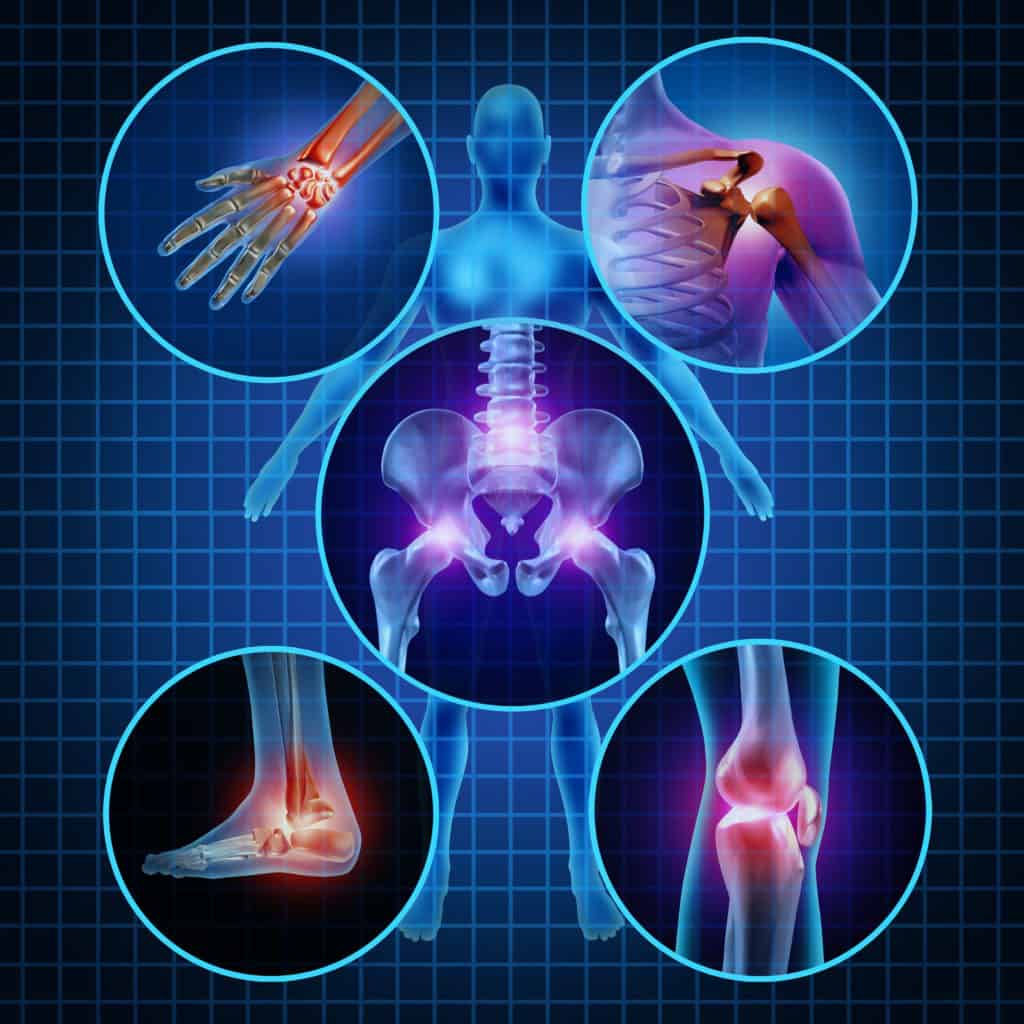Myofascial pain is a chronic condition that causes discomfort and pain in specific areas of your body. It is a recognized condition, but it is not well known.
Sadly, there is quite a lot that doctors of standard Western medicine still don’t know about Myofascial Pain Syndrome or Complex Regional Pain Syndrome. Sufferers of the condition often feel alone, and can find themselves retreating from family events and avoiding friends due to the irritation and mood swings that chronic pain causes.
Thanks to our extensive experience with fascial issues, alongside our studies with John F Barnes, PT – the inventor of Myofascial Release Therapy – we understand that as an ongoing issue, the effect of myofascial pain on your body has a widespread negative impact on your well-being and quality of life.
Myofascial pain affects sleep patterns, your nervous system, mobility and flexibility, digestive function, and many other seemingly unconnected systems in the body. Don’t worry, though! There is hope for treating the root causes of myofascial pain – even if you’ve tried painkillers and steroid injections or feel like you’ve exhausted all avenues already.
So, if you’ve heard about myofascial pain and want to know more about what it is – and what causes it – you’ve come to the right place. This blog explains myofascial pain syndrome, how it may occur, and what you can do about it.
What Is Myofascial Pain?

Well, we should probably start by explaining what fascia is. We like to get our patients to picture it as a suit – like a softer, more flexible suit of armor. And in some ways, it is like body armor because it protects our bones, muscles, and internal organs from injury and stops the infection from invading our body via the skin.
Except, rather than being worn outside of your body like a suit of armor or skin, fascia runs deeper. Sometimes it’s called a fascial (spiders) web. This analogy is a bit more of an accurate representation; surrounding, connecting, and protecting everything in our body – from encasing your heart muscle and protecting your pancreas from injury to aligning your skeleton and connecting your head to your feet.
In simplistic terms, it’s kind of like the stuff that makes you 3D – instead of a pile of bones and organs lying on the floor – and allows for those bones, organs, and muscles to be able to move around: bend, flex, jump and swim. Make sense?
The problems start when this essential connective tissue becomes stiff, tight, twisted, and restricted; effectively pulling and twisting your muscles, skeleton, ligaments, and organs out of their natural position and stressing them out. Then, instead of a soft, organized web of fibers, it becomes a battered, old straight-jacket – that is dry, dehydrated, and disorganized and felt as myofascial pain.
“A tree that is unbending is easily broken.”
– Lao Tzu

Myofascial pain is officially referred to as myofascial pain syndrome. This painful condition is a chronic issue involving persistent pain in specific areas of your body. It may feel like you have a knot in your muscles. You may find getting to sleep and staying to sleep a challenge – due to the pain.
You could also suffer from headaches, tinnitus, and altered posture when sitting or standing, amongst many other things.
Pain can range from a mild, dull ache or headache to stabbing and severe nerve pain. It could be body-wide aches and pain or needle-like pain in a specific spot. It could be intermittent, sporadic, or constant in nature. Some patients also report numbness and tingling around the painful area and loss of function and strength in fingers, toes, or muscles.
When talking about myofascial pain, we refer to the specific points where you feel pain as trigger points or referral zones. You also feel them in other areas of your body – that seem unconnected. We often feel them without any pressure on the trigger point, too.
What Causes Myofascial Pain?

As we mentioned, myofascial pain syndrome may occur when the myofascia becomes restricted through a range of causes. When the fascia’s movement has become limited through inflexibility and tightness, it causes the pain we experience in many forms, including myofascial pain syndrome.
So, what causes myofascial pain syndrome?
Myofascial pain syndrome has several causes:
- Repetitive exercise: Continuous exercise or monotonous work could cause specific muscles to become overworked and strained – like, sitting at a desk or in a vehicle for 8 hours a day for 50 years. However, myofascial pain syndrome is not like a typical muscle strain that you get at the gym or going over on your ankle that resolves after rest and ice. If you have myofascial pain, the discomfort and pain will be ongoing for months and years.
- Muscle injury: If you are injured and damage your muscles from an impact like a car accident or fall or over-stretching muscles beyond their capacity in sports, it could result in myofascial pain syndrome. Hamstring strains, ACL or PCL tears, and patella tendon strains heal with rest and physical therapy. Still, it’s the residual inflammation and damage to the myofascia that causes pain to remain long term – long after the initial injury has healed.
- Incorrect posture: We know bad posture can result in problems. But using a laptop at the wrong height, for instance, or twisting to look at a poorly positioned computer screen over many years may also cause myofascial pain syndrome. You may even have developed a poor walking, standing, or sitting posture – in response to myofascial changes triggered by an accident, that is now a self-fulfilling prophecy.
- Anxiety: The tension we experience when stressed or suffering from Generalized Anxiety Disorder, causing us to hold our breath and clench the muscles around the jaw and the neck and shoulders, could trigger myofascial pain syndrome.
“The soul suffers when the body is diseased or traumatized, while the body suffers when the soul is ailing.”
– Aristotle
- Psychological Trauma: PTSD, domestic violence, emotional and physical trauma, work-related chronic stress, financial troubles, addiction, and mental health challenges – and their psychological factors – may also have an impact on myofascial pain syndrome.
- Fibromyalgia: Some scientists suggest that fibromyalgia, which involves chronic pain all over the body, may begin as myofascial pain syndrome due to restrictions in the fascia. However, the jury is still out, and the medical community is still undecided on what causes fibromyalgia.
In standard western medicine, chronic pain syndromes are too often dismissed as psychosomatic and “in a patient’s head.” Treatment, if offered, is limited to physical therapy, medication, injections into the trigger point. Some patients independently seek out light therapy and relaxation therapies with some success.
However, an alternative and more effective, long-term treatment for myofascial pain syndrome and many other chronic pain conditions is Myofascial Release Therapy.
What Happens During a Myofascial Release Therapy Session?

During myofascial release therapy, the myofascia in restricted areas – which lead to pain and trigger points forming – are gently stretched using light but continuous pressure and techniques that stretch, compress, and lengthen the myofascia. The purpose of the treatment is to return the fascia to its original, supple and elastic state.
Treating myofascial pain syndrome with myofascial release benefits blood circulation, oxygen, and the lymphatic system while aiding relaxation and proper mobility of the body and tissues at all levels. Imagine it like your body being able to finally kick back and relax on the beach with a book and margarita. Like the relaxed and zen-ed out feeling we get when we go on vacation and forget everyday life stresses.
Myofascia is a super strong and highly flexible tissue surrounding our muscles, bones, and other parts of our body. So it doesn’t just relax overnight. Patients usually require several treatment sessions to see more remarkable results. Still, some of the benefits – like relaxation and increased mobility – can be immediate. Patients often feel as though they are ‘lighter’ after their therapy sessions.
How To Get Help For Myofascial Pain Syndrome

In our experience, no two patients or their experiences with myofascial pain are the same. Everyone is different. Your old ankle injury might be causing chronic headaches due to issues with the superficial back line of myofascia running from your head to your feet.
Alternatively, neck pain and mobility problems could be due to injuring your calf playing football as a child. Somebody else might be experiencing headaches due to emotional trauma and fascial restrictions around the neck and shoulders. Each patient is a new adventure for us – to find the root cause of your pain and help you find relief from chronic pain.
But you don’t have to commit to treatment right away if you’re not sure. We offer several different options for an initial consultation with one of our Myofascial Release Therapy practitioners. Choose from a free telephone consultation, video call, or 30-minute discovery visit at our Salt Lake City Clinic.
We want to help you get back to doing what you love. By joining the Release Works family, we’ll work with you towards a brighter future – devoid of pain and chronic discomfort. Don’t stay stuck in pain for a minute longer: contact us to discuss how we can help you get out of pain now.

